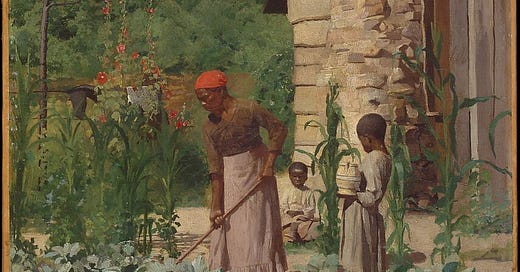Frank Tannenbaum, Slave and Citizen: The Negro in the Americas (New York: Alfred Knopf, 1947), pgs. 128.
Frank Tannenbaum’s Slave and Citizen is still being debated after its publication in 1947. Tannenbaum (1893-1969) was an Austrian immigrant, historian and sociologist at the turn of the 20th century. This book sent shockwaves through the field and is a landmark text. He argues simply that Spanish and Portuguese New World slavery were distinctive and had more routes to freedom available to the enslaved than English and American slavery.
Tannenbaum urges his readers to see slavery not only as a legal or economic principle, but one that is a “moral one1” His begins his narrative with a focus on the role of Africans and their descendants in building the New World, something that scholars of his day did not always discuss or emphasize (think the Dunning School). The majority of Slave and Citizen however focuses on the moral and legal setting of slavery in English and Iberian imperial settings.
While noting that there is much research to be done, Tannenbaum argues that Iberian law, which was based on Roman Justinian Law and still included provisions for slavery (an institution he points out was still common in Iberia in the 15th century), and the Catholic church’s humanizing teachings of the nature of the enslaved helped make more openings in the system of slavery for routes to freedom. For example, Tannenbaum notes the higher rates of interracial relationships and also the higher rates of manumission. He also points out that enslaved people were able to utilize the legal system and find advocates because of legal and theological traditions that held that though enslaved, African descended peoples were still human. While Tannenbaum is emphatic that Latin American slavery was brutal, one can sense that he is more convinced that it was English slavery that was more barbaric (a clear pushback on centuries of the Black Legend).
England had long before removed slavery from its territory, making the reintroduction of slavery in the New World not something based on generations of precedent and law, but one that was created on the fly and primarily controlled by slaveholders. Furthermore, Tannenbaum emphasizes that English churches either initially did little work with people of African descent or completely ignored them as potential converts. This combination of lack of legal and religious attention led to a dehumanizing system that sought to denigrate African Americans to nothing more than beasts of burden. This system developed over generations to become more brutal and hostile to people of African descent. In a sense, Tannenbaum saw the violence of the Civil War a product of the dehumanization of English slavery.
There are a couple of issues I saw with this book. First, Tannenbaum neglects the antislavery in British North America that came from both non-slaveholders and former slaveholders. Second, as has been repeatedly pointed out, Tannenbaum oversimplifies a lot of history and ignores areas (such as enslaved people using the courts in the US) that contradict his point (though to be fair, researching far and wide was much harder in the 1930s.) Other scholars have poured article after article in dismantling Tannenbaum’s theories, so I will leave my critiques at that.
However, there are some fascinating points that are resurging in the literature. First, Tannenbaum’s point that there was indeed a difference between Iberian and other European slaveries is now almost a moot point. As Tannenbaum noted (which scholars sometimes suggest he didn’t note), both slaveries were brutal. However, the paths to freedom and the integration of people of color into the hierarchies of power are important to note. Another important point is his prioritizing religion and law as durable cultural foundations that lead to changes. I think more can be explored on these themes between the Northern and Southern United States.
Overall, I found this book well written, quick, and interesting. Some arguments and language are outdated, but for a book written over 80 years ago, it still holds relevance today. Slave and Citizen deserves to be seen as a classic in history and one that still has insights for the rising generation of scholars. It certainly impacted me as I read it today.
Robert Swanson
Tannenbaum closes with this quote: “While the mills of God grind slow, they grind exceeding sure. Time - the long time - will draw a veil over the white and black in this hemisphere, and future generations will look back upon the people of this New World of ours with wonder and incredulity. For they will not understand the issues that the quarrel was about.” (127)




